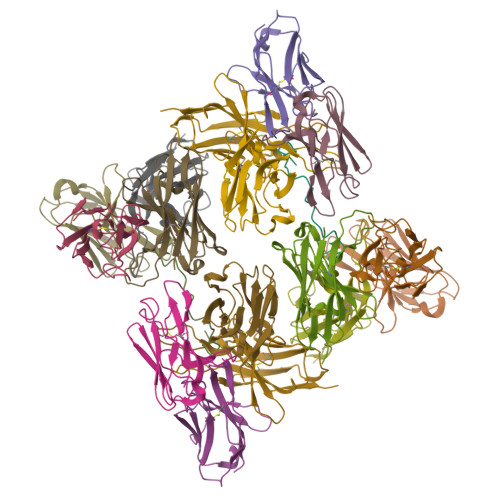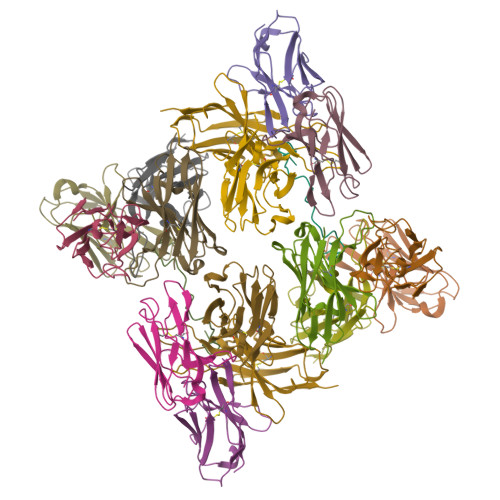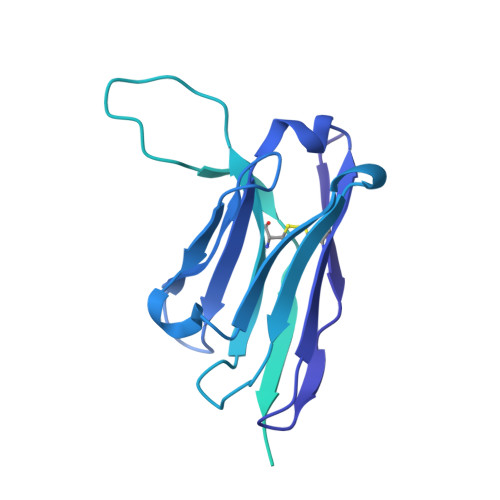Affinity-matured homotypic interactions induce spectrum of PfCSP structures that influence protection from malaria infection.
Martin, G.M., Torres, J.L., Pholcharee, T., Oyen, D., Flores-Garcia, Y., Gibson, G., Moskovitz, R., Beutler, N., Jung, D.D., Copps, J., Lee, W.H., Gonzalez-Paez, G., Emerling, D., MacGill, R.S., Locke, E., King, C.R., Zavala, F., Wilson, I.A., Ward, A.B.(2023) Nat Commun 14: 4546-4546
- PubMed: 37507365
- DOI: https://doi.org/10.1038/s41467-023-40151-x
- Primary Citation of Related Structures:
8DYT, 8DYW, 8DYX, 8DYY, 8DZ3, 8DZ4, 8DZ5, 8EKF - PubMed Abstract:
The generation of high-quality antibody responses to Plasmodium falciparum (Pf) circumsporozoite protein (PfCSP), the primary surface antigen of Pf sporozoites, is paramount to the development of an effective malaria vaccine. Here we present an in-depth structural and functional analysis of a panel of potent antibodies encoded by the immunoglobulin heavy chain variable (IGHV) gene IGHV3-33, which is among the most prevalent and potent antibody families induced in the anti-PfCSP immune response and targets the Asn-Ala-Asn-Pro (NANP) repeat region. Cryo-electron microscopy (cryo-EM) reveals a remarkable spectrum of helical antibody-PfCSP structures stabilized by homotypic interactions between tightly packed fragments antigen binding (Fabs), many of which correlate with somatic hypermutation. We demonstrate a key role of these mutated homotypic contacts for high avidity binding to PfCSP and in protection from Pf malaria infection. Together, these data emphasize the importance of anti-homotypic affinity maturation in the frequent selection of IGHV3-33 antibodies and highlight key features underlying the potent protection of this antibody family.
Organizational Affiliation:
Department of Integrative Structural and Computational Biology, The Scripps Research Institute, La Jolla, CA, 92037, USA.




















